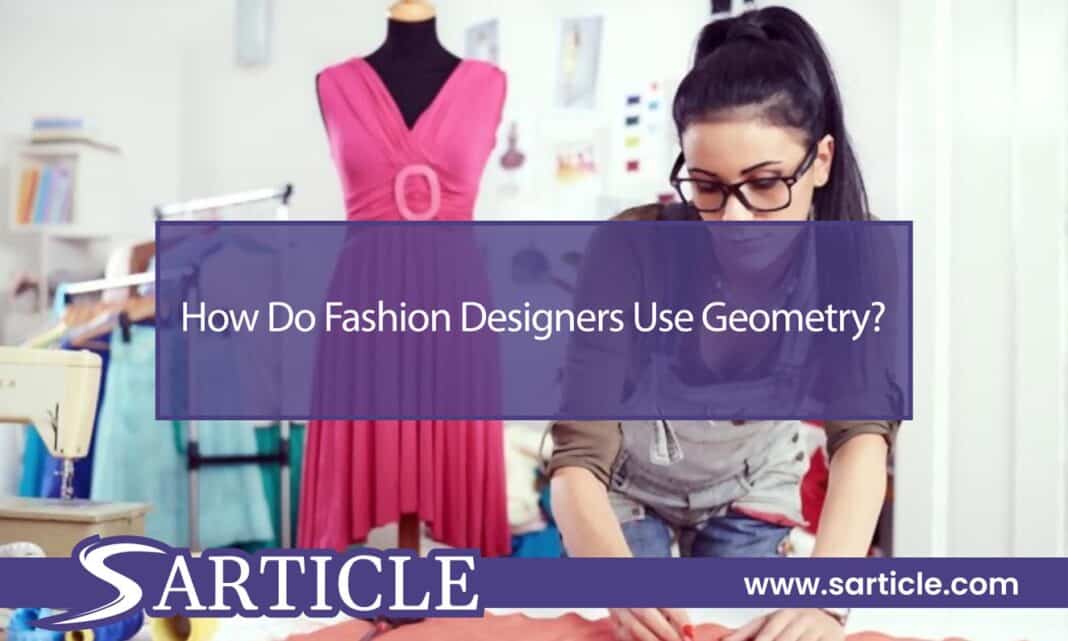Geometry has a strange, decorative ability to pop up in unexpected places. You can find it in architecture, interior design, or the most unexpected places. Fashion designers use geometry daily to create their designs. But how do fashion designers use geometry?
It is helpful to know a bit about how they do it. At the core of all fashion design is matching patterns for garments and accessories to look good together. They create patterns using geometric shapes, from triangles and squares to circles and hexagons. You can easily match your pattern with these shapes at your disposal as a designer. But you also have access to infinite possibilities of geometry in fashion.
You can incorporate geometry into your designs in many ways beyond simple pattern matching. Let’s take a look at how fashion designers use geometry.
How Do Fashion Designers Use Geometry?
Fashion designers who use geometric shapes are extraordinary and talented. It is a hard task for them. But they follow the following five steps.
Matching Shapes for Patterns
Let’s start with the basic principles of design. When you design a new garment, you’re looking to match a pattern created in the past (for example, a shirt pattern, a dress pattern, or an apron pattern).
If you have a shirt with a certain pattern, you can use a pencil or ruler to trace the pattern onto a new shirt. This is pattern matching, and it’s as simple as it sounds. But, if you’re a fashion designer, you may want to do more than trace patterns. You want to take your shape-matching skills to the next level, and that’s where geometry comes in.
Creating New Shapes from Old Ones
Fashion designers often take existing geometry in fashion and add some designs. This is what’s called geometric abstraction. It’s a way to take something that has already been designed. They just alter it in a new way to create something entirely new.
This method works especially well when creating a completely new silhouette. Something you can’t do with geometric abstraction when simply matching shapes. This is an example of geometric abstraction: The designer took an existing geometric object, such as the hexagon, and then transformed it into a completely new shape.
In this case, the designer cut the hexagon in half, creating two triangles. The designer could have also drawn a new pattern for a shirt entirely from triangles, transforming the garment’s shape.
Using Symmetry in Your Designs
Symmetry is a key concept in geometry that can be used in many different ways in a design. The most common use of symmetry in fashion design is with patterns, but you can also use it to create an optical illusion through your design.
You must divide one line into two halves to create a symmetrical pattern. You have to make it either vertically or horizontally. Then, mirror the other line, creating an “x” shape. This allows you to create a symmetrical pattern like you would if you had divided it into four squares.
Giving Textures an Edge with Geometry
Geometric shapes in fashion design can transform the texture of a fabric or the sheen of color. A geometric shape can drastically change the appearance of a fabric, turning a simple work shirt into a sophisticated evening gown.
This geometric abstraction transformed the fabric into a simple red cotton fabric. The geometric shape was added to add texture to the fabric, turning it into a more structured and expensive fabric.
Finding the Right Balance in Your Designs
Geometry can work in many different ways with the same garment. Some fashion designers may change the original design so much that you can’t tell it’s the same dress; others may keep the basic shape and add a new geometric pattern.
Geometric abstraction often adds a new geometric pattern to a garment. The designer chose to keep the basic shape of the dress but added a geometric pattern to transform it completely.
Conclusion
How do fashion designers use geometry? In short, fashion designers use geometry in different ways, from creating new geometric patterns to changing the texture of a garment through geometric abstraction. Geometric shapes can completely change the appearance of a garment, giving it a completely new look with a different texture. This geometric design can make a plain shirt into a sophisticated evening gown or transform a simple work shirt into a more expensive fabric.
The key to a successful geometric design is finding the right balance of geometric shapes and patterns to transform a garment or create an optical illusion. It’s important to remember that geometric design involves a balance between shapes and patterns, and it’s important to experiment to find the best balance for your designs.


